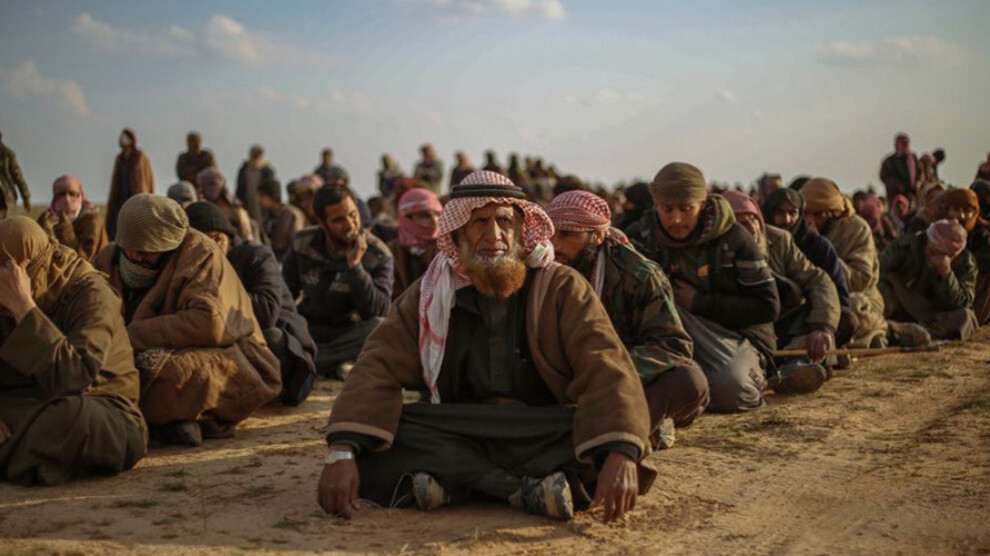ISIS exploits crises and conflicts for resurgence
Article by Talal Muhammad, Chairman of the Kurdistan Democratic Peace Party, published on the Syrian Democratic Council website.
Article by Talal Muhammad, Chairman of the Kurdistan Democratic Peace Party, published on the Syrian Democratic Council website.

“ISIS” is the abbreviated name for the terrorist group known as the Islamic State in Iraq and Syria. It was founded in late June 2014 following the group’s control over numerous cities and regions in Syria and Iraq. It crossed the border between the two countries, adopting the slogan “Remaining and Expanding” to express the indefinite expansion in all regions. It became a quasi-state unrecognized by any country, adhering to a Salafi jihadist ideology. The primary goal, as claimed by the group’s leaders, is to establish unity. However, in my opinion, ISIS was created to be transient. In fact, it expanded its influence in a large number of regions, but it ultimately was eliminated as soon as its mission was completed. On Saturday, March 23, 2019, ISIS lost its final stronghold in Baghouz, Deir ez-Zor, at the hands of the Syrian Democratic Forces (SDF) with the support of the Global Coalition forces.
Despite the military defeat of ISIS and the near-complete elimination of its presence in cities, its sleeper cells still exist in the countryside of desert areas. The Syrian Desert has become the main stronghold of its activities, exploiting the fragile security situation, the deteriorating economic conditions, and the tense political climate. It also capitalizes on the political and economic crises and conflicts in the region to expand its influence.
Despite the Global Coalition’s operations implemented against ISIS and its leaders, the group has resurged intermittently, coinciding with political crises in Syria, particularly Turkish threats to conduct military operations in northeastern Syria. These threats involve targeting vital facilities and infrastructure, aiming to create chaos and security instability. These factors are all crucial for these sleeper cells to carry out attacks on prisons holding their militants in the regions held by the Autonomous Administration of North and East Syria (AANES), and launch attacks on Syrian army forces. These attacks pose a threat to the resurgence of ISIS, the practice of violence and terrorism, and undermine regional stability. ISIS exploits a lot of terrain and mountains in the area where its cells are located to facilitate hiding and search for logistical support. It gets support either from Syria or through external entities.
Therefore, geographical location is a crucial factor for the group’s resurgence in Syria in the future. The group’s cells continue to carry out their attacks, exploiting these locations, particularly in the areas near the cities of Raqqa and Deir ez-Zor. They attack villages and towns at night, terrorizing and extorting the local population. They exploit local divisions, whether ethnic, political, or sectarian differences, for their own gains.
ISIS always exploits political situations, crises, and conflicts, whether they are regional or international, to revitalize itself, spread its extremist ideology, and carry out new attacks.
Since Russia’s involvement in the Ukrainian war, Russian airstrikes against areas where ISIS cells exist have noticeably decreased for about a year and a half. That has provided ISIS with an opportunity to activate its groups, intensify its operations in the Syrian Desert, and resume its campaign of hatred in that region and around the world. There were international concerns and fears regarding the possibility of an ISIS resurgence in regions in crisis.
In a related context, ISIS exploits the ongoing war in Gaza in line with its usual strategy, which is to reject jihad for the sake of liberating land or a homeland, but rather jihad for the sake of establishing its caliphate only. Since the recent events in Palestine escalated, ISIS has called for jihad as a group that calls for the application of Sharia law and adheres to the divine constitution, claiming that it is the only group that aims to apply the correct Islamic approach.
In short, it can be said that the threat posed by ISIS still exists, threatening regional and global security and stability. Therefore, it is imperative for the Global Coalition to prioritize the fight against ISIS in the long term, eliminate causes of extremism and its ideology, and develop strategies to counter its threat. That should be done by setting up a joint work program and international and regional cooperation through emphasizing on the following matters:
– Increasing the provision of military and logistical support to the SDF, as well as increasing in the number of coalition troops that should be deployed in multiple areas in northeastern Syria.
– Eliminating ISIS cells effectively to prevent them from controlling geographical areas and redeploying their militants again.
– Conducting qualitative combat operations in raiding and combing, especially in the Syrian Desert.
– Setting up a joint work program to strengthen the partnership among the European Union and its allies within the Global Coalition to achieve political stability in the northeast Syria regions.
– Working diligently to evacuate the camps of ISIS children and women, especially the al-Hawl (Hol) camp.
– Developing rehabilitation programs for ISIS families to prevent any opportunities for the formation of new groups affiliated with ISIS that could regain control of areas once again.